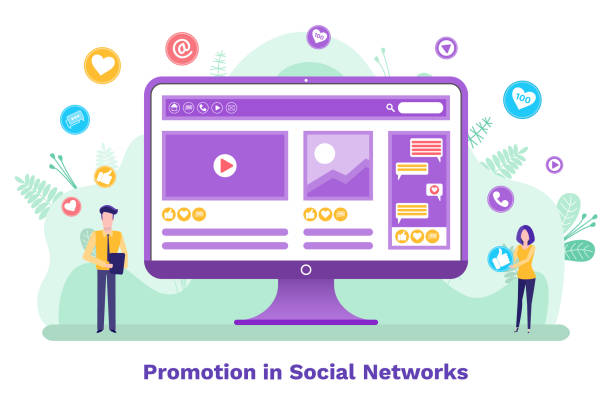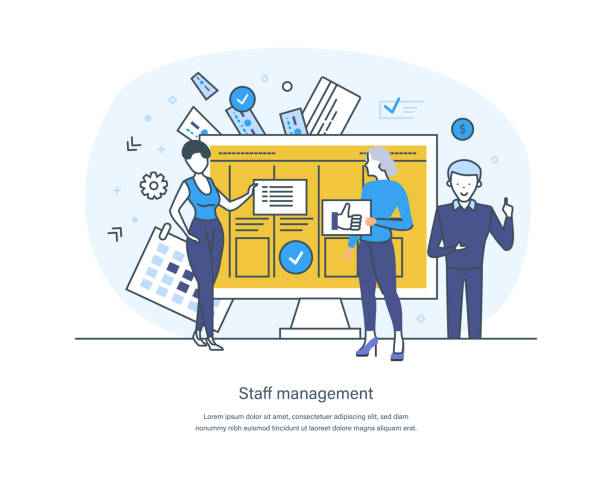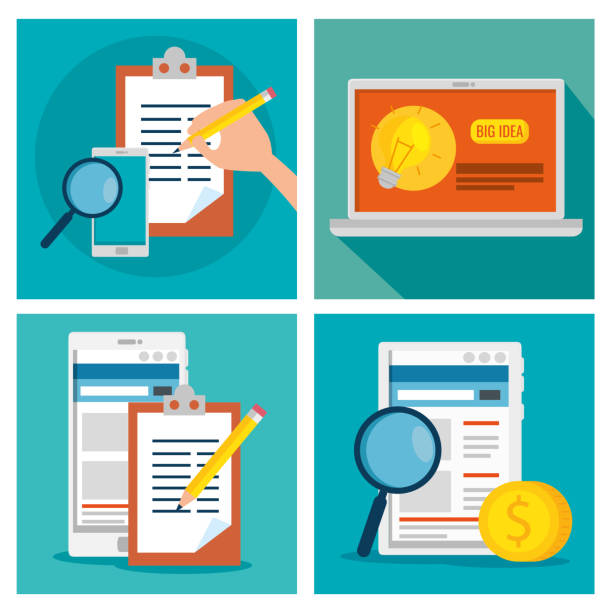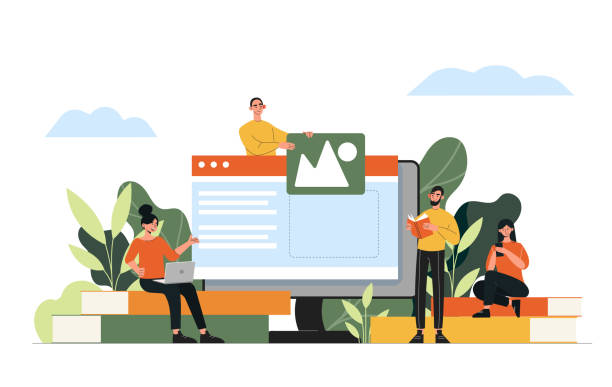Introduction to the Importance of Secure Website Design in Today’s Digital World

In the current digital age, where millions of new websites come into existence daily, the topic of #secure_website_design has become more important than ever.
Website security is no longer a luxury option, but a vital necessity for every online business and individual with a digital presence. Websites, due to storing sensitive customer information, conducting financial transactions, and providing services, have always been the primary target of cyber attackers.
A security breach can not only lead to the loss of valuable data but also severely damage a brand’s reputation and incur irreparable financial losses.
Therefore, understanding the principles and proper implementation of secure website design and resistance against potential attacks is the first step in maintaining stability and success in the online space.
This includes protecting user data, preventing unauthorized access, and ensuring service stability.
This explanatory and educational approach will help you gain a comprehensive understanding of this field.
Does losing customers who visited your site to buy bother you?
Rasaweb is your specialized solution for having a successful online store.
✅ Significant increase in your online sales
✅ Building trust and professional branding with customers⚡ Get free consultation from Rasaweb experts!
Identifying Common Web Threats and Their Impact on Site Security

To achieve secure site design, we must first become familiar with the types of threats that target websites.
Attacks such as SQL Injection, Cross-Site Scripting (XSS), Distributed Denial of Service (DDoS), and Phishing are among the most common threats.
SQL Injection allows attackers to extract or manipulate sensitive information by injecting malicious code into the database.
XSS enables the injection of malicious scripts into web pages, which can lead to user information theft or website content alteration.
DDoS attacks make a website inaccessible by sending a massive volume of traffic to the server, and phishing attempts to steal user information by impersonation.
Understanding these vulnerabilities and their attack mechanisms is the first step in secure website design and adopting appropriate preventive measures.
This specialized section provides you with a deeper insight into the existing risks.
The Foundation of Website Security SSL/TLS Certificates and Encryption

One of the first and most crucial steps towards secure site design is the implementation of SSL/TLS protocols.
SSL (Secure Sockets Layer) certificates and their newer version TLS (Transport Layer Security) ensure an encrypted and secure connection between the user’s browser and the website server.
These protocols encrypt the data transmitted between the user and the website, so even if attackers gain access to the data, this information will be unreadable to them.
Websites that use SSL/TLS are indicated in the browser’s address bar with the prefix “https://” and a green padlock icon, signifying connection security.
Furthermore, search engines like Google also give higher rankings to websites with SSL/TLS, which is important for SEO as well.
This specialized guidance is essential for anyone looking to enhance their website’s security.
| Vulnerability Type | Description | Preventive Solutions |
|---|---|---|
| SQL Injection | Injecting malicious SQL codes to access or modify the database. | Using Prepared Statements, input validation, least privilege access to the database. |
| Cross-Site Scripting (XSS) | Injecting malicious scripts into the website that are executed by other users. | Output Encoding, using Content Security Policy (CSP). |
| Broken Authentication | Defects in authentication mechanisms that allow attackers to impersonate users. | Strong password encryption, Multi-Factor Authentication (MFA), secure session management. |
| Sensitive Data Exposure | Disclosure of sensitive user information due to insufficient protection. | Encrypting data at rest and in transit, restricting data access. |
The Importance of Data Protection Encryption and Privacy Policies

One of the main pillars of secure site design is comprehensive data protection.
This protection includes not only user data but also sensitive business and technical information of the website.
Data encryption, both in transit (with SSL/TLS) and at rest (in the database), creates a crucial defensive layer.
Using strong encryption algorithms for passwords and financial information prevents unauthorized access even in the event of a server breach.
In addition to encryption, implementing clear and transparent policies for user privacy (Privacy Policy) and complying with relevant regulations such as GDPR (General Data Protection Regulation) in Europe or similar laws in other regions, is of high importance.
These policies must explicitly explain what data is collected, how it is used, with whom it is shared, and how it is protected.
Failure to comply with these principles can lead to heavy fines and loss of user trust. This explanatory and specialized section will help you gain a comprehensive understanding of this field.
Is your e-commerce site ready to attract maximum customers and increase sales? Rasaweb transforms your online business with modern and efficient e-commerce website designs.
✅ Increased speed and improved SEO
✅ Excellent user experience on mobile and desktop⚡ Get a free e-commerce website design consultation from Rasaweb now!
Strong Authentication and Secure User Session Management

User authentication and secure session management are key components of secure site design.
Weak or incomplete authentication systems can allow attackers to easily gain access to user accounts.
Using strong and unique passwords, implementing Two-Factor Authentication (2FA) or Multi-Factor Authentication (MFA) to enhance account security are among the effective solutions.
MFA requires users to provide another method of identity verification (such as a code sent to a mobile phone or a fingerprint) in addition to their password.
Furthermore, proper user session management is crucial.
This includes using secure session tokens, setting appropriate expiration times for sessions, and invalidating sessions after user logout or detection of suspicious activity.
Improper session management can lead to Session Hijacking attacks, where attackers gain control of a legitimate user’s session. This is a specialized and very important guide for every web developer.
Continuous Security Monitoring and Cyber Incident Response

Secure site design is not limited to the initial development stages; it requires continuous monitoring and the ability to respond quickly to security incidents.
Websites are always exposed to new threats that are constantly evolving.
Regular security scans, penetration testing, and continuous review of server logs to identify suspicious activities are among the essential measures.
Implementing a Web Application Firewall (WAF) can also serve as an additional defense layer against common web attacks.
Furthermore, having a clear plan for cyber incident response (Incident Response Plan) is vital for any website.
This plan should include the necessary steps for identification, containment, eradication, and recovery after a cyber-attack.
Prompt and transparent notification to users in case of a data breach is also part of this process that helps maintain trust. This is an analytical and news-oriented approach that emphasizes the importance of preparedness.
Securing Content Management Systems (CMS) and Plugins

Many of today’s websites are built on Content Management Systems (CMS) like WordPress, Joomla, or Drupal.
While these platforms offer powerful features, due to their popularity, they are also the primary target of many attacks.
To achieve secure site design using a CMS, specific measures are necessary.
The first step is regularly updating the CMS core and all plugins and themes.
Developers constantly release security patches for discovered vulnerabilities.
Removing unused plugins and themes, using complex passwords for administrative panel access, and restricting access to files and folders (using appropriate file permissions) are other vital measures.
Additionally, it is crucial to use reputable and well-known plugins and themes and to avoid downloading nulled versions or from untrusted sources.
This guide and educational section is highly beneficial for CMS users and developers.
| Security Item | Description | Status (Done / In Progress) |
|---|---|---|
| Regularly updating the CMS core | Ensure the latest versions of the CMS core are installed to receive security patches. | |
| Updating plugins and themes | Continuously check and update all installed plugins and themes. | |
| Removing unnecessary items | Remove unused and old plugins, themes, and users. | |
| Strengthening passwords | Use strong and unique passwords for all users. | |
| Activating 2FA/MFA | Enable two-factor or multi-factor authentication for admin panel login. | |
| Restricting access | Set correct file and folder permissions, and restrict access to critical files. | |
| Using WAF firewall | Implement a Web Application Firewall to protect against common attacks. | |
| Regular backup | Perform regular and automatic backups of the database and files. |
The Importance of Backup and Disaster Recovery Planning

Even with the best security measures in secure site design, the possibility of a cyber incident or human error always exists.
Therefore, regular backups and having a comprehensive Disaster Recovery Plan are of paramount importance.
Backups should include all website files, databases, images, and any other content essential for the website’s proper functioning. These backups should be automated and regular, stored in secure locations, preferably in multiple physical or cloud locations.
The disaster recovery plan should also outline the precise steps to restore the website to normal operation after a disaster (such as a hacking attack, server failure, or natural disasters).
This includes Recovery Time Objectives (RTO) and Recovery Point Objectives (RPO).
This section focuses on the importance of preparedness for worst-case scenarios.
How much does losing business leads due to an unprofessional site cost you? Solve this problem forever with professional corporate website design by Rasaweb!
✅ Increase credibility and trust among potential customers
✅ Easier attraction of new business leads
⚡ Get a free consultation right now!
Legal and Ethical Aspects of Secure Website Design

Secure site design is not merely a technical issue; it also has important legal and ethical dimensions.
With increasing concerns about data privacy, stringent laws and regulations such as GDPR in Europe, CCPA in California, and similar laws worldwide have been enacted.
Websites are obligated to securely collect, store, and process user data.
Non-compliance with these regulations can lead to heavy fines and a loss of public trust.
From an ethical standpoint, developers and website owners have a responsibility to protect their users’ information and be fully transparent about how this information is used.
It is questionable whether all developers are aware of these responsibilities? This includes preventing excessive data collection, providing clear options for users to control their privacy, and accountability in the event of a data breach.
In fact, ethics in website design dictate that user security and privacy should be prioritized.
This section provides thought-provoking and analytical content.
The Future of Secure Site Design: Artificial Intelligence and Blockchain

The field of secure site design is constantly evolving, and with the emergence of new technologies, novel security approaches also appear.
Artificial Intelligence (AI) and Machine Learning (ML) play an increasing role in detecting and preventing cyber threats.
AI-based systems can identify unusual traffic patterns, predict DDoS attacks, and even identify vulnerabilities in code.
These technologies help websites automatically respond to threats and protect against new attacks.
On the other hand, blockchain technology also has great potential to enhance web security.
Blockchain can be used in decentralized authentication systems, digital identity management, and even secure content distribution to prevent data tampering and cyber attacks.
In the future, we will witness further evolution of these technologies in web security and their wider adoption in secure web development, which will bring a more engaging yet safer experience for users.
This analytical section addresses the future of web security.
Frequently Asked Questions
| No. | Question | Answer |
|---|---|---|
| 1 | What does secure site design mean? | Secure site design refers to a set of measures and methods used to protect a website against cyber attacks, unauthorized access, data breaches, and other security threats. Its goal is to maintain the confidentiality, integrity, and availability of information. |
| 2 | Why is site security important? | Site security is crucial for maintaining user trust, protecting sensitive information (such as personal and financial data), preventing financial losses, preserving brand reputation, and complying with legal regulations (such as GDPR). A security breach can lead to customer loss and heavy fines. |
| 3 | What are some of the most common security attacks against websites? | The most common attacks include SQL Injection, XSS (Cross-Site Scripting), CSRF (Cross-Site Request Forgery), Brute Force, DDoS attacks, Broken Authentication, and Missing Function Level Access Control. |
| 4 | What is the role of SSL/TLS certificates in site security? | An SSL/TLS certificate (which results in an HTTPS address) is used to encrypt data exchanged between the user and the website server. This prevents eavesdropping or tampering with sensitive information such as passwords and credit card details during transmission and verifies the website’s authenticity. |
| 5 | How can SQL Injection attacks be prevented? | To prevent SQL Injection, Prepared Statements or ORM (Object-Relational Mapping) with validated parameters should be used. Additionally, thorough filtering and validation of user inputs (Input Validation) and applying the principle of least privilege in the database are essential. |
| 6 | What is HTTP Strict Transport Security (HSTS) protocol and how does it help security? | HSTS is a web security policy that instructs browsers to load the website only over an HTTPS connection, even if the user enters the address with HTTP. This prevents downgrade attacks and cookie theft on public Wi-Fi networks. |
| 7 | What is the importance of regularly updating software and plugins for site security? | Regularly updating the Content Management System (CMS), plugins, themes, and other software components of the site is crucial to fix discovered security vulnerabilities. Developers constantly release security patches, and failing to update can leave the site vulnerable to known attacks. |
| 8 | What measures can be taken to increase the security of the site’s administration section (admin panel)? | Changing the default admin panel path, using strong passwords and two-factor authentication (2FA), restricting access to specific IPs, using CAPTCHA on login pages, monitoring logs, and continuous CMS updates are among these measures. |
| 9 | Why is filtering and validating user inputs (Input Validation) important? | Filtering and validating inputs helps prevent the injection of malicious code or unauthorized data through forms, URLs, or other user input sections. This prevents attacks like XSS and SQL Injection that exploit invalid inputs. |
| 10 | Name some common tools or services for checking and enhancing site security. | Tools such as Web Application Firewall (WAF), vulnerability scanners (e.g., Acunetix, Nessus), Intrusion Detection and Prevention Systems (IDS/IPS), CDN services with security features (e.g., Cloudflare), and periodic Penetration Testing can enhance site security. |
and other services of Rasaweb Advertising Agency in the field of advertising
Smart Brand Identity: An effective tool for attracting customers with the help of SEO-driven content strategy.
Smart Digital Branding: A combination of creativity and technology to increase website visits by using real data.
Smart Brand Identity: Designed for businesses seeking online growth through the use of real data.
Smart SEO: A novel service to increase user engagement through attractive UI design.
Smart Sales Automation: An effective tool to increase sales with the help of Google Ads management.
And over hundreds of other services in the field of internet advertising, advertising consultation and organizational solutions
Internet advertising | Advertising strategy | Advertorial
Sources
Essential Security Tips in Website Design
Website Security: A Comprehensive Guide to Protecting Your Website
What is site security? Why does my site need it?
Comprehensive Guide to Website Security and Enhancing Site Security
? To be seen and grow your business in the digital world, Rasaweb Digital Marketing Agency is with you. From exclusive website design to SEO optimization and advertising campaign management, we pave your way to success.
📍 Tehran, Mirdamad Street, next to Bank Markazi, Kazaroon Jonoubi Alley, Ramin Alley, No. 6




